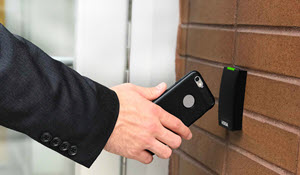Top 20 Access Control Terms Explained
Jared Reeves is Technical Services Manager at DGA. Jared and his team provide technical support to DGA customers and evaluate new security technologies for the company’s product portfolio. Outside of DGA, Jared serves as a Commissioner on the Wantagh Fire District Board of Fire Commissioners. Jared has been serving his local community as a volunteer firefighter and advanced emergency medical technician for almost 15 years.
Whether you currently subscribe to the DGAPass™ Managed Security service or are researching about physical access control systems in general, many security technology acronyms and terms can be a bit... inside baseball. Well, we're here to help! Here are the top 20 physical access control terms explained:
Access Card
An access card is a credit-card sized device that contains an encoded ID number that can be captured by a reader. Access cards can utilize one or more encoding technologies including proximity, smart card, magnetic stripe or Wiegand. Also see the related terms below: Access Credential, Credential Reader.
Access Control Unit (ACU)
An Access Control Unit (ACU) is a panel to which all door locking hardware (see Electric Strike and Mag Lock below) and credential readers are connected. The ACU functions as the traffic controller as well as the primary power source for all the devices connected to the access control system.
Access Credential
An access credential is a device that contains an encoded ID number that can be captured by a reader. Access credentials can come in multiple forms including cards, fobs, tags or mobile apps. Also see the related terms: Access Card, Credential Reader and Mobile Credential.
Access Level
Also known as an Authority Level. An access level controls who can access specific doors, cabinets or drawers during specified time periods. Depending on their role, a user can be assigned one or more access levels.
Biometric Reader
A biometric reader matches a unique morphological (structural) characteristic associated with a person against a database to authenticate that person before granting access to a protected area. Biometric readers can scan a person’s fingerprint, palm, voice or iris.
Credential Reader
Also referred to as a Card Reader. A reader is used to capture an access credential’s encoded data and transmit it to an Access Control Unit (ACU). Based on the cardholder’s access rights, the ACU grants or denies access. Modern credential readers commonly use radio frequency identification (RFID) and/or Bluetooth wireless communication technology to pass the encoded information between the access credential and the reader when they come in close proximity, without having to make a physical contact.
Door Held Open
The Door Held Open feature sends a signal to an outside monitoring center when the monitored door remains open longer than the preset time period. The monitoring center will then alert the list of contacts provided by the business.
DoorStat
DoorStat is an access control feature that allows an authorized cardholder to keep a specific door in an unlocked or locked position by double tapping their access credential at the reader.
Electric Strike
An Electric Strike is a common locking method used with modern access control systems. An Electric Strike has a hinged catch that releases to open the door when the strike is activated by an authorized credential being presented to the reader.
Escort
Also called the Two-Person Rule. Escort is an access control procedure that requires two cardholders to be present in order to grant access to a specific door, display case, etc.
Fail-Safe
Also referred to as Fail-Open. Fail-safe refers to a locking method that defaults to the unlocked or open position when power is removed or interrupted. Access systems are universally required by code to revert the locking methods to the fail-safe position upon a fire alarm activation to ensure a safe, fast exit for those inside the premises. A fail-safe lock requires a constant supply of low-voltage electrical power to remain in a locked position.
Fail-Secure
Fail-secure refers to a locking method that defaults to the locked position when power is removed or interrupted. A fail-secure lock requires a constant supply of low-voltage electrical power to remain in an unlocked or open position.
Fire Relay
A fire relay is a switch used to integrate a building’s fire alarm system and access control system to ensure that all doors are automatically unlocked during a fire alarm emergency. A fire relay removes the power source to the door locking methods during a fire alarm to keep the doors unlocked. Also see the related terms: Electric Strike, Mag Lock and Fail-Safe.
First Person In
First Person In is an access control feature that requires a specific cardholder(s) to enter first before permitting access to any other cardholders. The First Person In feature is often used by businesses that require a manager to be on site prior to staff entering the premises.
Local Door Sounder
A local door sounder is a siren device that provides audio alert when a protected door is held open past the preset time period, typically 15-30 seconds. A local door sounder is usually installed at the door in order to alert those nearby but it can also be installed in a separate location that is monitored continuously by the staff (e.g., security office).
Mag Lock
Also known as an Electro-Magnetic Lock. Mag lock is a locking method that consists of a powerful electromagnet and an armature (a metal plate). Typically used in building entry doors or glass doors, the electromagnet is installed on or in the door frame and the armature is attached to the door. When electrified, the electromagnet keeps the door in a locked position. When a mag lock’s electromagnet loses power, the door will remain unlocked. Also see the related term: Fail-Safe.
Managed Access Control
Managed access control is a cloud-based access control service in which the system providers install and maintain all required software and hardware for their customers. Cardholder changes are made by the customer using a web-based portal and/or mobile app.
Mobile Credential
A mobile access credential is an app on a smartphone that communicates with a reader using BLE (Bluetooth Low Energy) or NFC (Near Field Communication) technology. Depending on the type of the mobile access credential, a user can open the door with a tap or a slight twist motion of the phone.
Radio Frequency Identification (RFID)
RFID is a type of wireless communication technology that uses radio waves to automatically identify objects. An RFID system requires an RFID tag, an RFID reader and an antenna. For example, in access control systems, an RFID access card contains an integrated circuit and an antenna that transmit the encoded data from the card to the reader using radio waves when they come in close proximity. The RFID card reader then captures the radio waves and converts them into usable data.
Request to Exit (REX)
REX refers to a device that allows a valid exit through an access-controlled door. REX devices could be a motion sensor, push button or a touch-less button. A REX device is required for any doors secured with a mag lock. Also see the related terms: Passive Infrared (PIR) Sensor and Mag Lock.
Want to learn more about physical access control systems? Download the full glossary of common access control terminology.
Related Articles
How a Network Outage Impacts Cloud-Based Access Control Systems
Should your business security systems provider have a SOC audit?
Access Control: What are the First Person In and DoorStat Features?




